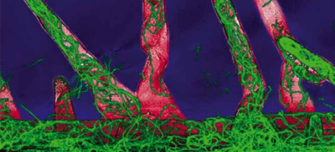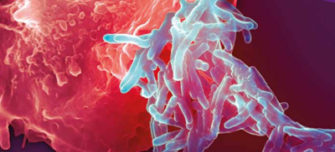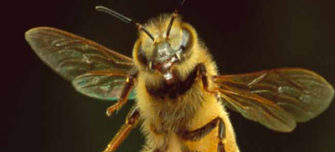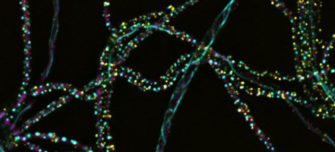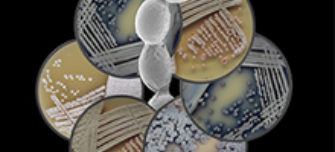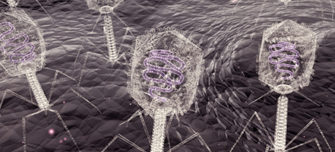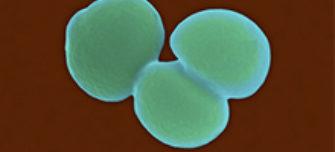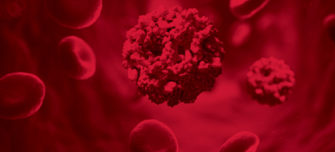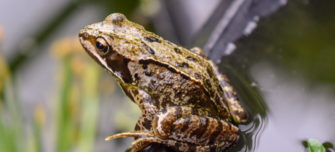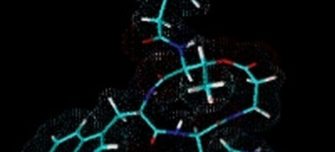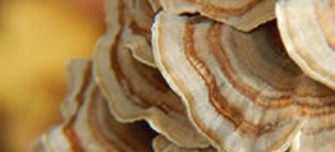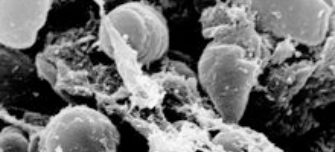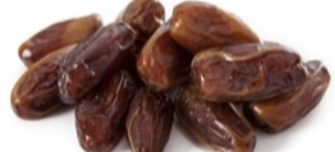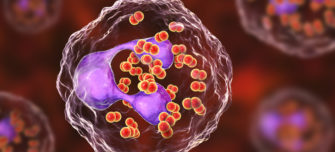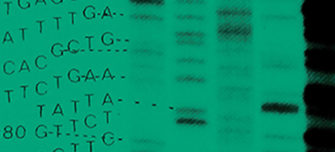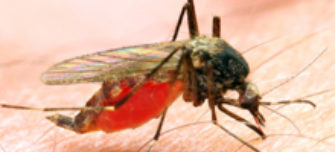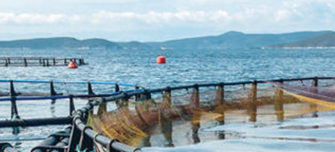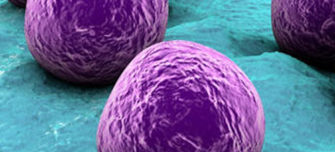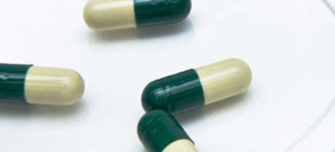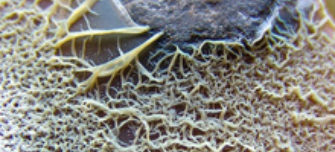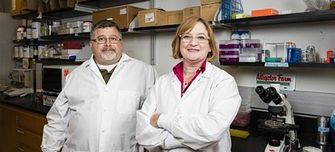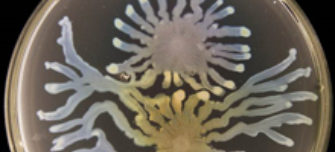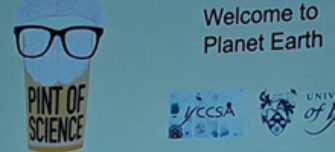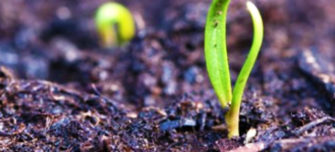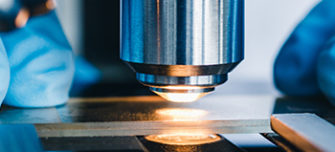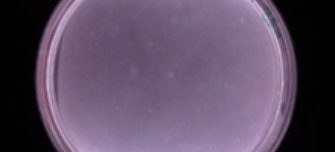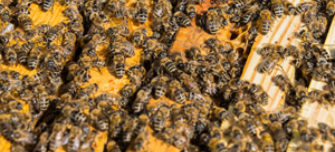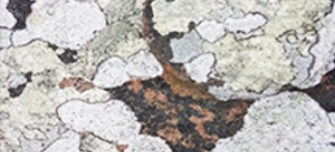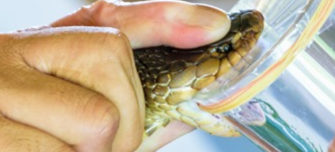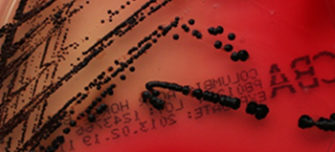Resources and further reading
-
Bacteria
Bacteria are single celled microbes. The cell structure is simpler than that of other organisms as there is no nucleus or membrane bound organelles. Instead their control centre containing the genetic information is contained in a single loop of DNA. Learn more about bacteria and why it matters to microbiology here.
-
Microbiology Today: Antimicrobials
In 2009, the World Health Organization recognised that antibiotic resistance was one of the three greatest threats to human health. In this issue of Microbiology Today, we discuss some of the issues related to antibiotics, their use and discovery.
-
Microbiology Today: Resistance to antimicrobials
Learn more about resistance to antibiotics and other antimicrobial agents, the emergence of new antibiotic-resistant bacterial strains and new viruses which are making it clear that infectious agents have retained their ability to cause severe problems for the human population.
-
Microbiology Today: Antimicrobials - where next?
The lead articles of this issue of Microbiology Today are on antimicrobials - where next? We explore a short history of antivirals, biocides in the home and manipulating genes for new drugs and microbial narcotics.
-
Microbiology Today: Alternative sources
Discover living alternatives to antibiotics and explore if a reappraisal of some old approaches using living organisms could be the answer, as we try to find novel ways of treating infections.
-
Microbiology Today: Actinobacteria
The lead articles in this issue of Microbiology Today are on Streptomyces, a review of UK microbial science and we introduce Actinobacteria, which are pathogenic, symbiotic and industrially important.
-
Microbiology Today: Mycobacteria
This issue of Microbiology Today highlights the family of bacteria called mycobacteria. The organisms that cause tuberculosis in humans and animals, Mycobacterium tuberculosis and Mycobacterium bovis, are featured in this edition alongside Mycobacterium leprae, the cause of leprosy, and Mycobacterium ulcerans, which causes Buruli ulcer.
-
Microbiology Today: Honeybee
Honeybees, the most important pollinators on the planet, are just like other living creatures; they are vulnerable to microbial attack and sometimes fall victim to a variety of viruses, bacteria and fungi. In this issue of Microbiology Today we explore how beneficial bacteria inside the honey crop have opened up a new research field.
-
Understanding bacteria journal collection
Explore journal articles related to the world of bacteria. From novel therapeutics, to multi-species biofilms and bacteria in industry; explore the collection today.
-
Mycobacteria: journal collection
Guest-edited by Dr. Riccardo Manganelli, this collection of keynote research articles will highlight all aspects of mycobacterial biology, with particular focus on physiological aspects, such as stress response mechanisms, regulatory networks, and metabolic pathways, that might lead to a better understanding of the intriguing aspects of mycobacterial host-pathogen interactions.
-
Streptomyces journal collection
This collection of keynote research articles will highlight fascinating aspects of Streptomyces biology, and the advances that are providing us with newfound insights and appreciation for these extraordinary bacteria.
-
WHO priority pathogens of concern: journal collection
In 2017, the World Health Organization published a list of antibiotic-resistant bacteria that pose the greatest threat to human health. These publications was compiled to help guide and promote research and the development of new antibiotics, and lists 12 families in order of research priority.
-
Bacteriophage: journal collection
This journal collection brings together Articles, Methods and Reviews relating to the diversity of bacteriophages and genomics-based research with a focus on their roles in the evolution of bacteria and ecosystems
-
X-AMR: journal collection
A pop-up journal collection for cross-disciplinary research on antimicrobial resistance, including a host of antimicrobial resistance papers already published across our portfolio.
-
A Sustainable Future: AMR Policy Report
Access our report, which highlights the crucial role microbiology plays in tackling AMR and identifies how microbiologists can rise to one of the biggest healthcare threats we face.
-
Antibiotic could be repurposed and added to tuberculosis treatment arsenal
Research has found fidaxomicin, an antibiotic usually used to treat bowel infections, prevents growth of resistant strains of Mycobacterium tuberculosis (MTb) in the lab.
-
A deadly fungus is killing frogs around the world, but the bacteria on their skin could protect them
Researchers in Costa Rica have found that some bacteria on the skin of amphibians prevent growth of the fungus responsible for what has been dubbed ‘the amphibian apocalypse’.
-
Could ‘killer yeasts’ be the key to treating drug-resistant Candida glabrata?
Some species of yeast produce a killer toxin that could be used to treat drug-resistant yeast infections. Researchers from the University of Idaho have identified a naturally-occurring toxin that kills the important fungal pathogen Candida glabrata.
-
Diving for antibiotics
In this blog post, Emily Addington describes her experience developing an outreach project called 'Dive for Antibiotics'. Emily carried out this project with a grant from the Microbiology Society and presented her project at the President's Roadshow in Strathclyde.
-
Could cinnamon oil be used as an alternative to antifungals?
Researchers have been investigating the potential for cinnamon essential oils to be used against Candida infections.
-
Enzybiotics and phages: safe alternatives to antibiotics in the control of food safety
The concept of treating bacterial infections with phage is not new – indeed it pre-dates the antibiotic era. Can this be used to eliminate the use of antibiotics in animal feed?
-
Drugs from bugs that kill bugs
It isn't just soil-dwelling actinomycetes that may hold the key to new antimicrobial compounds. Insect-pathogenic bacteria also produce a host of bioactive compounds – and what's more, they are easy to analyse in vivo.
-
Foraging for alternative antimicrobials
Researchers in Northern Ireland have been investigating the potential of mushrooms and toadstools to treat an infectious lung disease.
-
Cinnamon essential oil could make bacterial infections easier to treat
Researchers have found that a major component of cinnamon oil can help to clear certain bacterial infections.
-
Antimicrobial resistance: the next pandemic?
The COVID-19 pandemic appears to have accelerated the threat of antimicrobial resistance (AMR), as many patients admitted to hospitals displaying COVID-19 symptoms are treated with antibiotics to reduce their chances of contracting secondary bacterial infections, making resistant bacteria more common.
-
Does inflammation promote the growth of plague?
Researchers in the USA have been investigating ways to predict the survival of plague.
-
Date syrup shows promise for fighting bacterial infections
Date syrup – a thick, sweet liquid derived from dates that is widely consumed across the Middle East – shows antibacterial activity against a number of disease-causing bacteria, including Staphylococcus aureus and Escherichia coli.
-
Researchers from Nottingham rediscover Anglo-Saxon antimicrobial
Researchers from the University of Nottingham have shown that a 1,000 year old Anglo-Saxon remedy for eye infections, which originates from a manuscript in the British Library, has been found to kill the modern-day superbug MRSA.
-
Awareness campaign shows signs of delaying onset of drug resistant gonorrhoea in UK
Control of gonorrhoea is dependent on successful antibiotic treatment, and the bacterium that causes the infection, Neisseria gonorrhoeae has become increasingly resistance to every antibiotic used to treat it over the last 60 years.
-
Stomach bacteria switch off human immune defences to cause disease
Helicobacter pylori is a bacterium that establishes a lifelong stomach infection in humans, which in some cases can lead to duodenal ulcers or stomach cancer.
-
Coconut oil could combat tooth decay
Digested coconut oil is able to attack the bacteria that cause tooth decay. It is a natural antibiotic that could be incorporated into commercial dental care products.
-
Microbiology Editor’s Choice: induction of protein expression by cell wall targeting antibiotics
In this interesting and original work, the authors showed that the expression of the gene clpP is induced by antibiotics that target the cell-wall in Streptococcus mutans.
-
Honey could be effective at treating and preventing wound infections
Manuka honey could help clear chronic wound infections and even prevent them from developing in the first place, according to a study published in Microbiology.
-
New antibiotics needed: Staphylococcus aureus
In this blog, we explore one of the World Health Organization's 12 priority pathogens: Staphylococcus aureus. Learn how it frequently colonises the skin, upper respiratory tract and gut mucosa without causing disease, and how scientists are using genomics to help stop the spread of resistance.
-
Wolbachia: The mosquito manipulator
Using mosquitoes infected with bacteria sounds like a strange way to prevent the spread of disease, but that is exactly how scientists have been making headlines in Australia, Florida and Brazil.
-
Raising awareness of antimicrobial resistance
In 2019, Microbiology Society Champions Amy Sterling and Chris Proctor took over the University of Ulster's Twitter account to support World Antibiotics Awareness Week. Here, they discuss what they did and why it is important to raise awareness of antimicrobial resistance in a variety of formats.
-
Antimicrobial Resistance in Aquaculture
This case study is written by Dr Kelly Thornber, who is a Postdoctoral Researcher at the University of Exeter and a member of the Microbiology Society. It focuses on her research in the aquaculture industry, which poses a significant and largely unrecognised risk to global antimicrobial resistance (AMR) dissemination.
-
Streptomyces – nature's solution to AMR
Antibiotics were one of the most important medical discoveries of the 20th century. Before their discovery, infections of even small cuts had the potential to be fatal. What started with Fleming’s discovery of penicillin in 1928 led to the development of the over 100 antibiotics we have today, fighting infections the world over.
-
Revealing the dynamics of generalized transduction of antimicrobial resistant genes
This case study is written by Quentin Leclerc, who is a Research Degree Student at the London School of Hygiene and Tropical Medicine and a member of the Microbiology Society. It focuses on generalized transduction, where bacteriophages (“phages” – viruses that can infect and kill bacteria) act as vectors to transfer any bacterial DNA, including AMR genes.
-
Regulation of antibiotic production in Streptomyces: from nature to the clinic.
This case study is written by Dr Lorena Fernández-Martínez, who is a Reader in Microbial Genetics at Edge Hill University and a member of the Microbiology Society. It focuses on her research which involves understanding the signals which trigger antibiotic production in Streptomyces when grown in soil, which will contribute to alleviating the global challenge of antimicrobial resistance.
-
Savage Dawns: how two novel antibiotics can bring storytelling to synthetic drug development
This case study is written by Dr Ben Thomas, who is a Postdoctoral Researcher at Queen's University (and a Visiting Researcher at Aberystwyth University). It focuses on how two novel antibiotics woven from Middle Welsh poetry can bring storytelling to syn
-
Streptomyces: bacterial explorers
Streptomyces bacteria are some of the most studied microbes on the planet. This genus of soil-dwelling organisms is best known as a prolific producer of many of the antibiotics that we use clinically. However, despite 70 years of study, they still have secrets left to discover.
-
This device uses a laser to rapidly detect bacteria
SLIC by name, slick by nature. That’s the title of a presentation held by Dr Robert Hammond from the University of St Andrews at Annual Conference 2017. In it, he talks about a new technology for quickly detecting bacteria and their susceptibility to antibiotics.
-
Using insect larvae to study disease
Researchers from Maynooth University have been using larvae as a model to examine the progress of Staphylococcus aureus infection. Here, PhD student Gerard Sheehan discusses his research which was recently been published in the journal Microbiology.
-
Meet Wolbachia - the bacteria that could rid the world of dengue
Dengue is one of the world’s most devastating infectious diseases. Around half of the entire planet’s population is at risk from dengue infection, which can lead to excruciating joint pain, haemorrhaging and, eventually, death. Learn more about Wolbachia here.
-
The UK’s AMR strategy and coordinating a global response
In this blog about the Westminster Health Forum on Antimicrobial Resistance, Dr Tina Joshi who was invited to attend as a member of the Microbiology Society Policy Committee, member of the Science Committee of Antibiotic Research UK, and on behalf of the University of Plymouth, tells us more about her experience at the event.
-
JMM Editor’s Choice: an international network to tackle AMR
In this journal article Dr Tim Inglis discusses ‘The TACTIC experience: establishing an international, interdisciplinary network to tackle antimicrobial resistance’.
-
JMM Editor’s Choice: using Komodo dragon DNA to create antibiotics
Dr Marcello Riggio discusses “Komodo-dragon cathelicidin-inspired peptides are antibacterial against carbapenem-resistant Klebsiella pneumoniae”.
-
JMM Editor's Choice: Mutations causing antimicrobial resistance in Helicobacter pylori
This study describes the molecular characterisation of clarithromycin resistance – conferring genes in 63 isolates of H. pylori collected in Turkey.
-
JMM Editor's Choice: a same-day antimicrobial susceptibility test
This manuscript assessed the feasibility of using novel machine-learning techniques for the detailed analysis of data produced using a flow cytometer-assisted antimicrobial susceptibility test (FAST).
-
JMM Editor's Choice: drivers of persistent Pseudomonas infection in cystic fibrosis.
This interesting study demonstrates that agmatine, a pre-polyamine intermediate metabolite, is involved in the long-term persistence of Pseudomonas aeruginosa in patients suffering from cystic fibrosis.
-
JMM Editor's Choice: a new skin test for latent tuberculosis
Tuberculosis is a major global health problem and inaccurate diagnostic tests for latent tuberculosis infection are a challenge for managing the spread of this disease. In this important study, Kasempimolporn et al. sought to develop a novel diagnostic skin test based on specific tuberculosis antigens.
-
Microbiology Editor's Choice: anti-parasitic protection from phage
In this paper, researchers show that APSEs can indeed move laterally into recipient phage-free, non-protective H. defensa within aphids, and fully restore anti-parasite protection.
-
Pint of Science: Ecology & Evolution
In this blog, Rebecca Hall tell us about her experience at the Pint of Science Ecology & Evolution event in York.
-
JMM Editor's Choice: Emerging resistance to Fosfomycin in the UK
This paper highlights the incidence of resistance in a country with a limited use of the broad-spectrum antibiotic fosfomycin.
-
Microbiology Editor's Choice: social interactions in Pseudomonas aeruginosa
In this interesting article, Gurney and colleagues reported the evolution of a Pseudomonas aeruginosa isolate able to “circumvent metabolic incentives to cooperate and act as a combinatorial signalling cheat, with higher fitness in competition with its ancestor” opening a new perspective in the evolution of bacterial social behaviour.
-
Microbiology Editor's Choice: A greater understanding of UV damage in bacteria
This study reports new stress factors that are able to activate σE expression. The researchers demonstrate that UVA radiation induces σE activity in a pathway that is dependent on the stringent response regulator ppGpp.
-
Editor's Choice: A new test to measure treatment of plant diseases
This research paper outlines the comprehensive screening of antimicrobials to control phytoplasma diseases using an in vitro plant–phytoplasma co-culture system.
-
What is the Nagoya Protocol? How does it relate to microbiology?
In this blog, Katie Beckett from the UK Government’s Department for Business, Energy and Industrial Strategy (BEIS) tells us about the Nagoya Protocol, which aims to ensure that research benefits are shared in an equitable way.
-
A faster way to determine antimicrobial susceptibility
It can take as long as five days to determine which antibiotic treatments are likely to be effective in clearing a bacterial infection. These long wait-times can lead to ineffective antibiotics being used, delaying patient recovery and contributing to the increase of antimicrobial resistance. But is there a better way? In this blog, Kerry Falconer PhD student at the University of St Andrews discus
-
Spotlight on Grants: The motility of Staphylococcus aureus
This blog post focuses on the research into how Staphylococcus aureus moves over surfaces, featuring Megan Davies, whose research was funded by a Microbiology Society grant.
-
From space to stomach ulcers
Learn more about the study of stable isotopes, which are different forms of an atom that have varying numbers of neutrons and protons in their nuclei.
-
A sting in the tale – could bee products yield new antibiotics?
The continued emergence of multidrug-resistant bacteria and fungi is forcing researchers to search further afield in the hunt for novel antimicrobials.
-
A grave situation – the antimicrobial properties of churchyard lichens
Scientists are investigating common British churchyard lichens as a potential source for novel antimicrobials.
-
To notify, or not to notify – that is the question
In this blog, Professor Garry Blakely, from the University of Edinburgh's School of Biological Sciences, discusses carbapenemase-producing bacteria and the importance of surveillance.
-
Microbe Talk: Could snake venom contain antibiotics?
Alice Fraser from the Liverpool School of Tropical Medicine is part of a research team looking for new antibiotics in unexpected places. Listen to this Microbe Talk episode to find out about her research searching for antibiotic proteins in snake venoms and find out what Alice has found so far.
-
Microbe Talk: Domino Effect Episode 2
In this episode of Microbe Talk, Dr Lena Ciric, Senior Lecturer at the Department of Civil, Environmental and Geomatic Engineering at University College London (UCL) is interviewed by Sarah Jones, PhD student studying Geomicrobiology at Birkbeck and UCL.
-
Microbe Talk: MicroNews July
In the first episode of MicroNews, Laura and Matt talk about the HPV vaccine, fungal diseases and antimicrobial resistance. We also hear from Professor Sally Bloomfield who talks about the link between allergies and hygiene.
-
Microbe Talk: Improving the lifespan of antibiotics in Canada
In this podcast we spoke with Dr Mayri Alessandra Diaz De Rienzo, Ale for short, who is a Lecturer in Biotechnology at Liverpool John Moores University, UK. Ale is currently in Quebec, Canada, visiting the lab of Professor Eric Déziel on a Microbiology Society Research Visit Grant.
-
Microbe Talk: A sustainable future and antimicrobial resistance
Professor Laura Piddock from the University of Birmingham and Dr Anne Leonard, research fellow at the University of Exeter discuss how how research into antimicrobial resistance fits into the United Nations Sustainable Development Goals (UN SDGs)
Image credits:
Gaetan Stoffel//iStock
AlexRaths/iStock
George Mason University
James King-Holmes / Science Photo Library
Simon Moll & Kent Loeffler
Science Photo Library
Michael Durham / Minden Pictures / FLPA
Judith Armitage
Fahroni/iStock
Arcyto/iStock
Amite/iStock
Digital Vision / Thinkstock
H.B. Bode
ErikAgar/iStock
Aamulya/iStock
Thinkstock
NIAID
KatarzynaBialasiewicz/iStock
The British Library Board (Royal 12 D xvii)
OndrejVladyka/iStock
Dr_Microbe/iStock
Thinkstock
iStock
Smuay/iStock
AlexRaths/iStock
Görkem Kara/iStock
Thinkstock
Dr_Microbe/iStock
iStock/unoL
Denitsa Nedyalkova
Thinkstock
UnoL/iStock
ClaudioVentrella/iStock
Sofiaworld/iStock
Thinkstock
Kkolosov/iStock
Megan Davies & Eric Pollitt
European Space Agency on Flickr under CC BY-SA 2.0
Dmitrii Balabanov/iStock
iStock
Yongkiet/iStock
Marco Verch CC-BY 2.0
Fedor Kozyr/iStock
Marie Elliot






